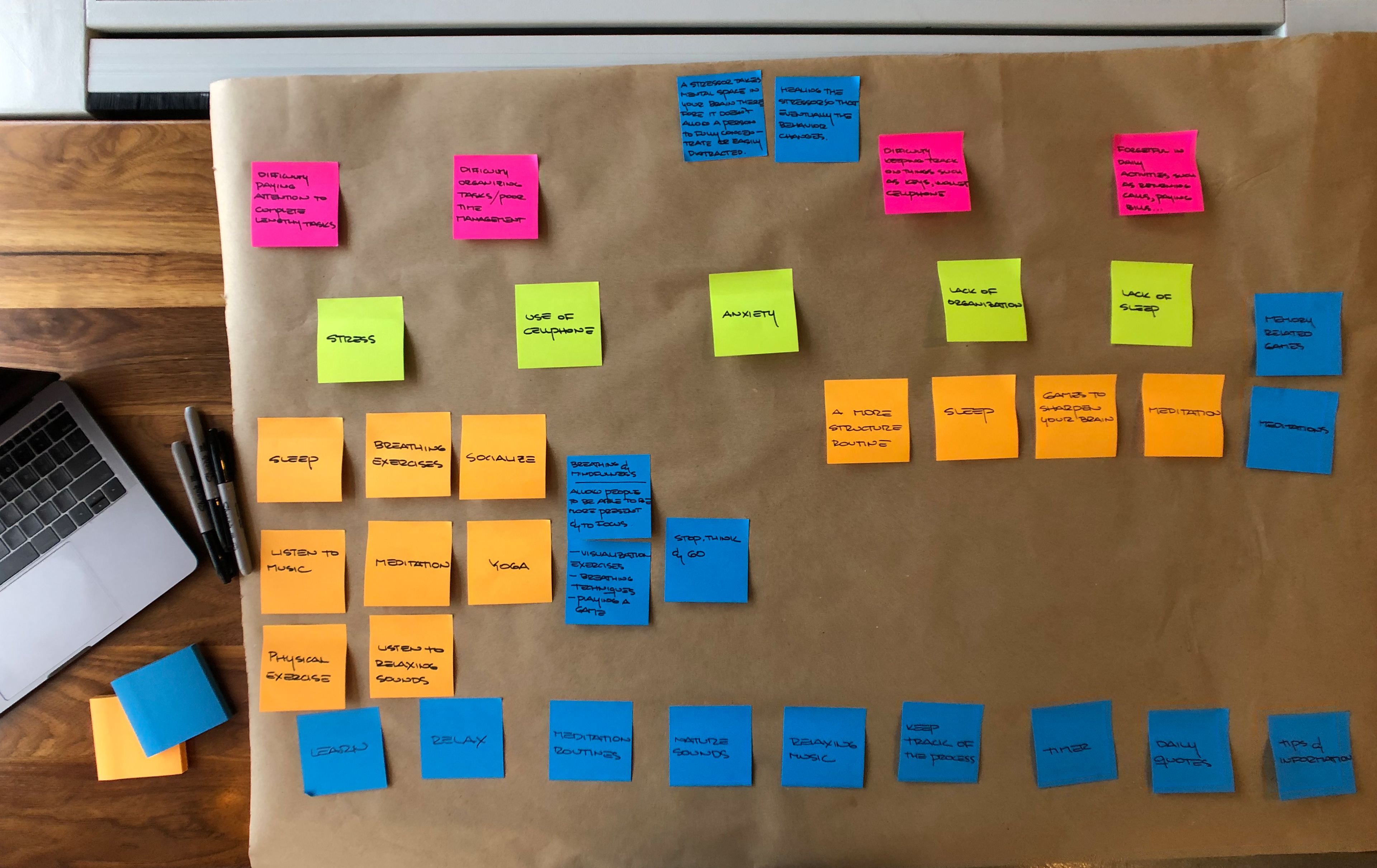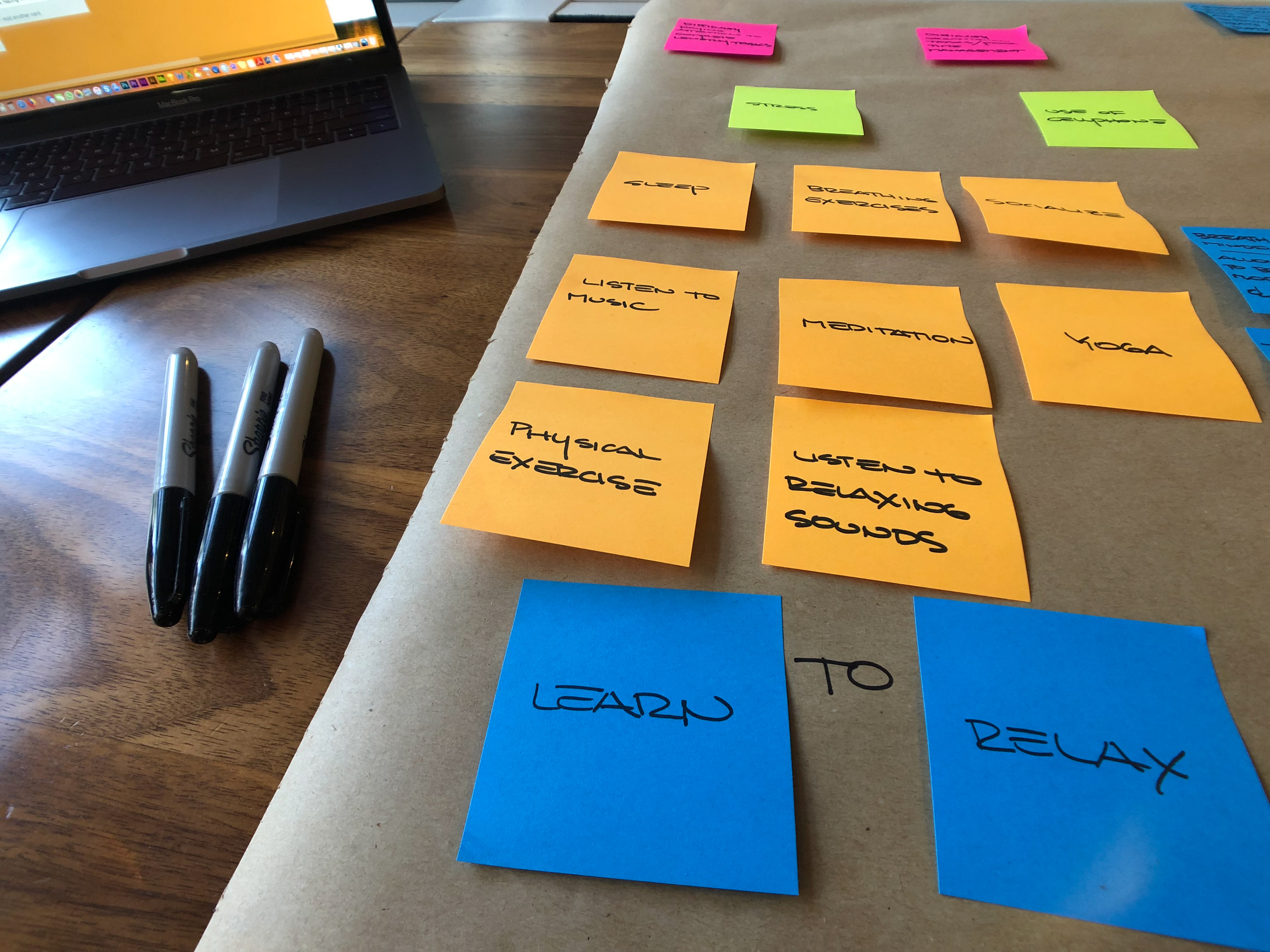COMPANY BRIEF
The National Wellness Institute is an organization founded in 1977 with the mission of providing, health promotion and wellness professionals, unparalleled resources and services that fuel professional and personal growth.
Even though NWI has numerous years of experience in the wellness field, their program has been slow to catch up with technology. They have seen a substantial drop in memberships and want to find a way to add value to their members.
They are aware that companies all across the Health Tech space are developing incredible tools to help people achieve their health and wellness goals. So this year, NWI wants to unveil a series of digital Wellness Tools at their annual conference.
The Wellness Institute is very excited to explore how they can leverage technology to help people live a healthier life.
PROBLEM & OBJECTIVE
Nowadays, we see a growing tendency of people feeling stressed and anxious. Having an inclination to suffer from inattention and forgetfulness. The reason is because stressors take mental space in our brain. Therefore, they don’t allow a person to fully concentrate or gets easily distracted, and forgetful.
The main objective is to conduct a user research to understand people’s relationship with mental, physical, and emotional well-being in order to develop a tool that will drive them to action, and for this tool to become part of an active process through which people become aware of, and make choices toward a more successful existence.
RESEARCH FINDINGS
MAIN ISSUES
Middle-aged professionals are often feeling stressed and tired. They lack structure and
organization. They lack concentration, and feel forgetful about daily tasks. As a result,
they don’t feel as productive as they would like to be.
WHAT ARE PEOPLE DOING TO REDUCE STRESS?
WILLINGNESS TO IMPROVE
HYPOTHESIS STATEMENT
The number one tool proven to help reduce stress is Meditation. It controls anxiety, lengthens attention span, improves sleep, and reduces age-related memory loss. We all need to learn to relax.
Meditation and learning how to maintain a healthier mind will help users to heal the stressor, the behavior will eventually change, and they will be able to achieve their goal.


OBSTACLES
People say:
-They don’t have time
-They don’t find meditation interesting
-They haven’t tried it
UX STRATEGY
GUIDING PRINCIPLES
How can we connect with these potential users to not only try Meditation, but also adopt Meditation as a habit?
1. Personalized experience. Make the app fit users’ lifestyle.
• It saves users time
• Increases users’ trust
• New topics can be recommended immediately
• Personalization makes users feel special
2. Make Meditation a fun and playful experience, bringing humor to it.
• Humor can set users’ experience apart from other brands in a positive way.
• Humor slows users down (In a good way). Researchers call this “elaboration,” a fancy word for paying close attention.
“Our sense of humor is our most human aspect… it also let us connect”
3. Set up time-based reminders and push notifications.
Example of Push notifications with sense of humor
MEASUREMENTS
• Higher frequency of use
• Increased self-support
• Change in behavior
WHO IS OUR USER?
In line with my research results and affinity diagram, I built my User Persona. This tool helped me to empathize with my target user.
WIREFRAMING AND TESTING
Based on the UX strategy, I knew that the first draft of the prototype had to start with a small questionnaire to set up a meditation plan to fit Annie's needs, and address her goals. It also had to include a content-based filtering system through feedback and ratings to be able to recommend topics matching her interests.
LOW FIDELITY WIREFRAMES
MID FIDELITY WIREFRAMES
UI DESIGN
MOODBOARD
STYLE TILE
HIGH FIDELITY PROTOTYPE
TO ACCESS THE PROTOTYPE, CLICK ON THE IPHONE'S SCREEN BELOW.
USABILITY TEST REPORT
• 5 participants
• 20 - 40 mins sessions
• Education: Masters Degree
• Ages: 25 - 45
All 5 participants were asked to complete 2 tasks.
Task #1: Share your progress stats with your therapist.
Task #2: Rate "Day1" of your meditation plan after playback is completed.
WHAT PARTICIPANTS LIKED THE MOST ABOUT THE APP
- Recommended content such as: Top Suggestions, Favorites and Continue Playing
- Filters options
- Overall design and colors. They all agreed it had a calming effect
- Consistency on the icons throughout the app. Meditation icon was what the participants liked the most
WHAT PARTICIPANTS LIKED THE LEAST ABOUT THE APP
- Didn't understand the difference between MEDITATIONS and MUSIC
- STATS and HISTORY section wasn't clear
- Meditation sessions under the STATS section was confusing
-Missing a Home screen
RECOMMENDATIONS FOR IMPROVEMENTS
- Should have the option to share all history with their therapist, not only Guided Meditations
- Should have a journal for users to have a record of their progress. How those meditations are helping them, how they are growing
- Description under Guided Meditations should include the level of complexity, the overall rating of all users, and the type of meditation. Ex: Metta meditation, Progressive relaxation, Mindfulness, Kundalini, Zen, TM, etc
- Organize the Menu to become the Home screen on the navigation bar.